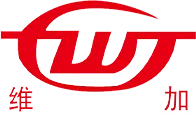- Afrikaans
- Albanian
- Amharic
- Arabic
- Armenian
- Azerbaijani
- Basque
- Belarusian
- Bengali
- Bosnian
- Bulgarian
- Catalan
- Cebuano
- Corsican
- Croatian
- Czech
- Danish
- Dutch
- English
- Esperanto
- Estonian
- Finnish
- French
- Frisian
- Galician
- Georgian
- German
- Greek
- Gujarati
- Haitian Creole
- hausa
- hawaiian
- Hebrew
- Hindi
- Miao
- Hungarian
- Icelandic
- igbo
- Indonesian
- irish
- Italian
- Japanese
- Javanese
- Kannada
- kazakh
- Khmer
- Rwandese
- Korean
- Kurdish
- Kyrgyz
- Lao
- Latin
- Latvian
- Lithuanian
- Luxembourgish
- Macedonian
- Malgashi
- Malay
- Malayalam
- Maltese
- Maori
- Marathi
- Mongolian
- Myanmar
- Nepali
- Norwegian
- Norwegian
- Occitan
- Pashto
- Persian
- Polish
- Portuguese
- Punjabi
- Romanian
- Russian
- Samoan
- Scottish Gaelic
- Serbian
- Sesotho
- Shona
- Sindhi
- Sinhala
- Slovak
- Slovenian
- Somali
- Spanish
- Sundanese
- Swahili
- Swedish
- Tagalog
- Tajik
- Tamil
- Tatar
- Telugu
- Thai
- Turkish
- Turkmen
- Ukrainian
- Urdu
- Uighur
- Uzbek
- Vietnamese
- Welsh
- Bantu
- Yiddish
- Yoruba
- Zulu
Comprehensive API Tubing and Casing Chart for Oil and Gas Industry
Understanding API Tubing and Casing An Overview
In the oil and gas industry, the terms tubing and casing refer to essential components of well construction, fundamentally designed to protect the wellbore, ensure the safety and efficiency of hydrocarbon extraction, and prevent environmental contamination. At the heart of these components is the American Petroleum Institute (API) standard, which provides guidelines and specifications for the manufacturing and testing of tubing and casing.
API tubing refers to the pipes that are installed within the casing of an oil or gas well, specifically designed to transport hydrocarbons from the underground reservoir to the surface. One of the primary roles of tubing is to allow for efficient and controlled flow of fluids. Tubing is typically smaller in diameter than casing and can come in varying grades and types, each suited for specific pressure and temperature conditions depending on the reservoir characteristics.
Understanding API Tubing and Casing An Overview
The API tubing and casing chart serves as a vital reference for engineers and drilling professionals, providing standardized specifications regarding dimensions, weights, and grades of both tubing and casing. The chart outlines various types of materials used, such as carbon steel, which is the most common material due to its strength and cost-effectiveness, and corrosion-resistant alloys for environments prone to harsh conditions.
api tubing and casing chart

When selecting the appropriate tubing or casing for a specific project, several factors need to be taken into account, including the expected well pressure, temperature, and the type of fluids that will be handled. This ensures that the selected pipes can withstand operational stresses and degrade less over time, significantly extending the well's life and productivity.
API standards not only facilitate safety and performance but also enhance communication within the industry by providing a universal language for equipment specifications. This consistency is critical in helping service companies and operators accomplish the successful drilling and completion of wells globally.
The process of tubular installation begins with careful planning and advanced calculations. Engineers must analyze geological data to determine the right tubing and casing designs, which often involves complex simulations and modeling. Following installation, both tubing and casing require regular inspections and maintenance to ensure their continued functionality over the life of the well.
In conclusion, the API tubing and casing chart is a foundational element of well construction in the oil and gas sector. Understanding the specifications and applications of these components is essential for professionals in the field. Proper selection and installation help to maximize extraction efficiency while ensuring environmental protection and occupational safety. As technological advancements continue to shape the industry, adherence to API standards remains critical for successful hydrocarbon production and long-term sustainability in oil and gas operations.
-
Well Casing Extension Couplings – Applications and InstallationNewsJun.06,2025
-
Types of Crossover Subs in Drilling & CompletionNewsJun.06,2025
-
Key Features of High-Quality Tubing Pup JointsNewsJun.06,2025
-
Installation and Maintenance Tips for Steel Couplings for PipeNewsJun.06,2025
-
How to Select the Right Pup Joint for Oil & Gas OperationsNewsJun.06,2025
-
Applications of Stainless Steel Pipe CouplingsNewsJun.06,2025







